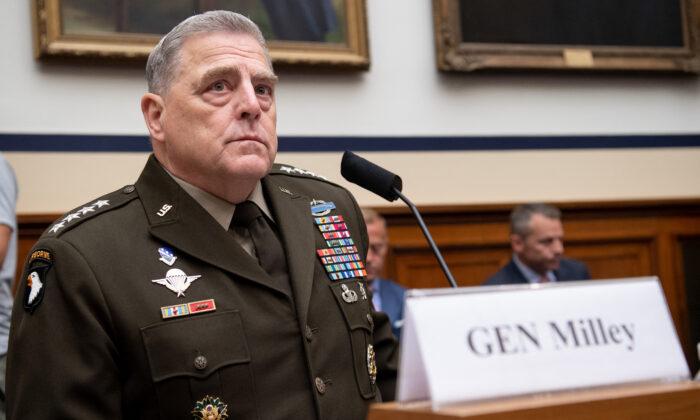The dominance of a civilization, he noted, depends not only on resources and military prowess, but also on “culture,” that hard-to-define yet palpable mixture of confidence, savoir-faire, and commitment to foundational principles beyond the calculus of individual profit or aggrandizement.
Beginning in the 3rd century, Rome began to turn away from that cultural compact and decline wove itself into the sinews of Roman society, according to Goldsworthy.
“The rot began at the top, and in time a similar attitude pervaded the entire government and army high command,” he wrote.
I predict that future historians, seeking to understand the decline of the United States, will settle on the annus horribilis of 2021 as the terminus a quo.
Immersed in the moment, it’s often hard to disentangle the main story from the cacophony and chatter of mere events.
But can anyone who isn’t Jen Psaki contemplate U.S. leadership and not discern the rot at the top?
A lot of ink has been spilled trying to assess them both, particularly their surrender to identity politics and to the corrosive sentimentality of political correctness.
Milley’s treacherous effort to circumvent the chain of command and pretend that the U.S. military answers to him above all, including the president, has attracted some measure of the obloquy that it deserves, but he continues on in his position, instead of being court-martialed.
I doubt that he‘ll be able to remain in the military for long—public sentiment against him is strong and growing—but I also doubt that he’ll be disciplined.
The rot that he himself embodies is too widespread to require it. Indeed, “rot at the top” describes our situation to a T.
At the pinnacle, we have an erratic practitioner of glossolalia for a president, whom everyone, friend and foe alike, understands is well on the road to senility.
Then cast your eyes down the line of succession: Vice President Kamala Harris, Speaker of the House Nancy Pelosi, President pro tempore of the Senate Patrick Leahy, Secretary of the Treasury Janet Yellin, and Austin.
A depressing cavalcade, isn’t it?
But the rot isn’t confined to political figures.
What Robert Frost called “the slow smokeless burning of decay” has installed itself in the heart of many of our most cherished institutions.
I already mentioned the military. What about our intelligence and crime-fighting institutions?
With every passing week, its role in concocting and disseminating the whole “Russia Collusion” narrative against Donald Trump becomes more obvious and more disgusting.
And note well that its activities on that front aren’t done and over with.
Christopher Wray, director of the FBI, is assiduously pursuing the successor to the Russia collusion narrative: the Jan. 6 insurrection hoax, according to which U.S. citizens exercising their constitutionally guaranteed right of free speech are branded as “domestic extremists” and hunted down.
The closer you look at that institution, the worse it looks.
Reflecting on the experience of Rome, Adrian Goldsworthy noted that when “governments or agencies forget what they are really for, then decline will occur.”
Moreover, he wrote that “bureaucracies are stubborn” and “tend to expand on their own and develop their own agendas.”
The rot that was likely yesterday becomes inexorable tomorrow.
Can the trend be reversed? Maybe. But Goldsworthy is right.
“If the trend is to be reversed, then this process needs to start at the very top,” he wrote.
What do you suppose the prospects of that are?
Perhaps it’s an illustration of Franz Kafka’s mordant observation that “there is hope, but not for us.”





